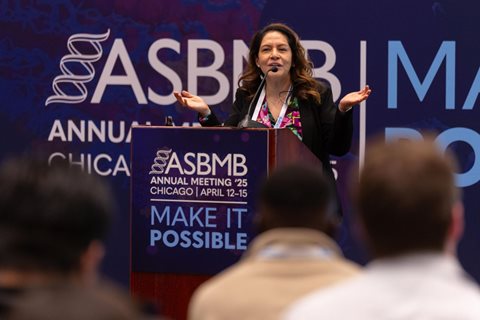Advice for those applying for Kirschstein training grants
Thousands of trainees apply annually for the National Institutes of Health’s Ruth L. Kirschstein National Research Service Award training grants (F30, F31, F31 Diversity and F32). However, many of these applicants, and their mentors, have little experience with writing such training grants.
Here are 10 things to know when constructing an NRSA training grant application:
1. First impressions are important!
Many times reviewers are reading your grant after a long, tiring day. Be kind to your reader. Provide visual rest by putting spaces between paragraphs. Present your figures in a logical and orderly manner. Use a spelling and grammar checker! Typos and poor grammar are unacceptable. Failure to pay attention to these details will give a negative first impression that ultimately will reflect poorly on you.
2. Assume the reviewers know nothing about your field of research.
Reviewers may be familiar with the general topic but will not implicitly know your field of research. Therefore, be detailed and avoid jargon when writing the research plan! Be explicit when describing your data; describe exactly what you want the reviewer to see. What is obvious to you may not be obvious to others.
3. Evaluation of the “Research Plan” focuses on training potential.
A poorly laid out research plan indicates poor mentoring by the sponsor. However, the focus on training potential allows more tolerance for exploratory techniques (e.g., next-generation sequencing). These large-scale techniques provide great training opportunities. However, these fishing expeditions must be justified. You must provide feasibility for the study, and you must illustrate a solid understanding of the larger implications of the results.
4. Your educational history is just that … history!
Be forthcoming about a less-than-perfect past! If you had poor grades, if you have a minimal publication record or if there is a gap in your training history, provide genuine reasons for this history. If you have overcome these issues, state that and have your references address why your past is not a barrier to your future training.
5. Know your future career goals and describe why your training environment will help you achieve them.
It is essential to communicate a mature and concrete view of your career goals. You must describe clearly how the training (including environment, research, sponsor, department and so forth) is perfect to help you achieve these goals.
6. Make the training plan personalized. Remember: Training is not just technical!
One of the biggest mistakes a sponsor makes is to provide a generic training plan focusing solely on the technical aspects. Overall training requires experience in communication, presentation, teaching, networking, and — for postdocs — laboratory management and transitioning to independence. Remember that each trainee is different so each training plan must be personalized for each applicant.
7. Inclusion of a co-sponsor must be integrated fully into the training plan.
A co-sponsor can make up for perceived deficiencies of the sponsor. Therefore, the co-sponsor must be integrated fully into the training plan. The applicant needs to describe the selection of the co-sponsor and how he or she will contribute to achieving the applicant’s career goals. How the co-sponsor will be involved must be described fully by the sponsor in the training plan.
8. Assume the reviewer of the resubmission has never seen your grant before.
Because service on NRSA study sections is ad hoc, the person who reviewed your grant the first time may not be on the committee overseing the resubmission. It is also highly likely that the grant will be assigned to a different reviewer. Even if it is assigned to the same person, four to six months will have elapsed, during which time he or she will have reviewed and discussed dozens of other grants. The reviewer most likely will not remember having read your application the first time.
9. In the resubmission, address every single criticism!
How well you address previous criticisms contributes to the score of your resubmitted application. Regardless of whether you agree or disagree, it is essential that you address every single criticism! If you feel a criticism is incorrect, state in the introduction that you respectfully disagree and provide a clear and logical explanation as to why. Reviewers are provided with the previous summary statement, so they know exactly what criticisms were raised the first time around.
10. Natural human bias affects reviewers’ perceptions of strengths and weaknesses.
Although it may not seem like it, reviewers are human beings. As such, natural human bias will contribute to the review of your grant. Each reviewer will have a different opinion on how issues such as a big-name investigator, big-name institute, quality vs. quantity of training history, and quantity vs. quality of publication history strengthen or weaken an application.
Given the natural biases and influences of human nature in the review process, there is no perfect formula for writing a fundable grant. However, these 10 simple points should make you aware of what reviewers are looking for in a top-quality application.
Enjoy reading ASBMB Today?
Become a member to receive the print edition four times a year and the digital edition monthly.
Learn moreFeatured jobs
from the ASBMB career center
Get the latest from ASBMB Today
Enter your email address, and we’ll send you a weekly email with recent articles, interviews and more.
Latest in Careers
Careers highlights or most popular articles

Building the blueprint to block HIV
Wesley Sundquist will present his work on the HIV capsid and revolutionary drug, Lenacapavir, at the ASBMB Annual Meeting, March 7–10, in Maryland.

Upcoming opportunities
Present your research alongside other outstanding scientists. The #ASBMB26 late-breaking abstract deadline is Jan. 15.

Designing life’s building blocks with AI
Tanja Kortemme, a professor at the University of California, San Francisco, will discuss her research using computational biology to engineer proteins at the 2026 ASBMB Annual Meeting.

Upcoming opportunities
#ASBMB26 late-breaking abstract submission opens on December 8. Register by Jan. 15 to get the early rate on our Annual Meeting.

Make your abstract stand out
Ensure your research is impossible to overlook. Get quick, practical reminders for crafting an abstract that attracts readers and helps you build connections at the conference.

Inside industry postdocs
As more Ph.D. scientists look beyond academia, industry postdocs offer a new kind of training, where mentorship meets mission-driven research. Fellows at Pfizer and Genentech share how these programs prepare them to translate discovery into impact.

